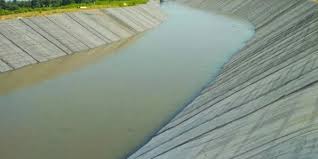November 13, 2025

Leaks and discharges not only jeopardize water quality but also negatively impact the public’s perception of the horticultural sector. This is a situation we cannot afford as an industry, as the potential consequences could be significant.
Monitoring surface water is crucial.
It is vital for the appropriate authorities to carry out inspections across all cultivation areas, including greenhouses within their jurisdiction. These assessments should involve monitoring at least all crop protection substances, as well as unauthorized chemicals.
Research shows that progress in water quality has plateaued. The data should clearly highlight which farms are performing well and which are not, ensuring transparency about the current situation.
In farms that show poor results, further investigations are required. Inspectors need to analyze the surface water in local reservoirs to accurately identify the sources of contamination.
Growers must implement all possible measures to prevent leaks. The stakes are too high to ignore. We have already seen cases where growers faced operational restrictions, crop protection products are being reassessed more quickly, and are being phased out at an accelerated pace. Regulations on nutrient usage may also become stricter.
The industry faces a significant challenge in meeting the new Water Framework Directive targets. Regardless of its feasibility, this is the reality we must confront. Therefore, growers, it is time to take action. Reflect on your practices and consider whether you might be discharging unauthorized substances.
Water coach
To create (virtually) closed-loop greenhouse systems, addressing the last remaining leakage flows is essential. Even small leaks can cause environmental limits to be exceeded.
In the quest for (near) zero-emission horticulture, it is crucial for growers to have a complete understanding of all water flows in their operations. This is where the water coach becomes invaluable: helping growers identify and map these flows, highlight weaknesses, and implement targeted actions.
With this hands-on support, growers are better equipped to comply with environmental regulations and promote a cleaner, more sustainable industry.
